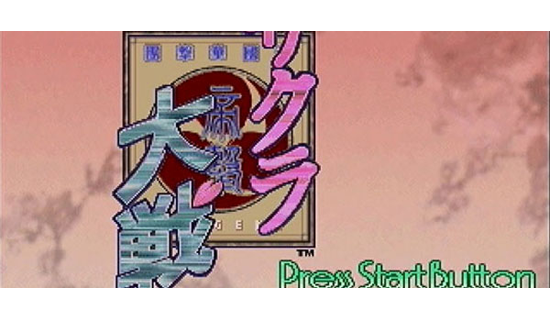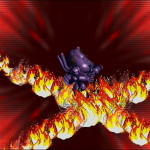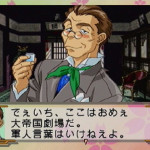It’s often the case that popular anime or manga franchises are adapted into games, but not as often do you see a game franchise turn into popular anime and manga. Sakura Taisen is one of the best examples of this phenomenon, and given the pedigree of its creators it was probably destined to become a media franchise from the beginning. The creator of the series was Ouji Hiroi, a manga creator who is probably best known for the creation of Sakura Taisen. The scenario writer was Satoru Akahori, a scriptwriter, manga author and novelist best known for such 90s staples as Saber Marionette and Bakuretsu Hunter (Sorcerer Hunters). The character design was done by Kousuke Fujishima (he’s certainly best known as being the creator of Ah! My Goddess!, as well as his involvement as a character designer in the Tales series of games) and Hidenori Matsubara (he did the character design for Fujishima’s original designs in the various Ah! My Goddess! anime adaptations, and has also been involved as a key animator in many other big animated features). Last but not least, the music was composed by Kouhei Tanaka (a composer of more game, anime and tokusatsu theme songs than I can count).
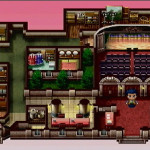 | 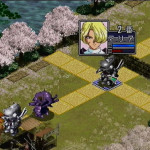 |
| The map used to navigate Oogami between areas in the theater during the data sim part of the game | A look at a map during the strategy part of the game |
With this star-studded team, it’s no surprise that Sakura Taisen would go on to become one of the best selling original Saturn games of all time. Its success had less to do with the talents of each individual involved though, and more to do with the the strong core concepts of the game and how everything came together into one fantastic package. From the introductory sequence the game is presented to the player in such a way that it feels like watching an anime. The opening sequence is an anime cut-scene, complete with an opening theme song. This serves as a fantastic introduction to the characters, setting (an alternate version of Tokyo during the 1920s, focused highly on advanced steam powered technology), and the overall high quality that is to come.
When the game proper begins, the player character is introduced: Ichirou Oogami, recent Imperial Naval Academy graduate who has been assigned the position of Sublieutenant of the secret unit “teikoku kageki dan” (commonly translated as “Imperial Assault Force – Flower Division”). As Oogami arrives at the Ginza headquarters, just how this unit was able to remain secret is revealed: it acts as a theater troupe by day (the headquarters itself is a theater). In fact this theater troupe is also called “teikoku kageki dan”, however the kanji used to represent “kageki” is changed from those meaning “flower” and “assault” to those meaning “song” and “play”. Oogami certainly wasn’t counting on this, and his adventure begins as he reluctantly takes on the day job of ticket-collector and gets to know each member of his new unit.
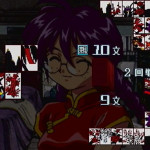 | 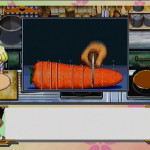 |
| One of the few mini games featured: Hanafuda with Kohran! I couldn’t remember the rules to Hanafuda all that well and I still won! | Just cooking some borscht with Maria! |
While the game’s story gets a bit anime troupe-y at times (it is a male main character interacting with a cast of female characters after all), it ultimately is a very well thought out and interesting one. Just as important as the story though, is the structure itself. It was called a “dramatic adventure game”, but it really is the love child of a dating simulation and a strategy RPG. Not only is this a very unique combination of game types, but both parts are executed extremely well. And given that my experience with each of these genres is either very limited or non-existent, my experience with Sakura Taisen was quite interesting!
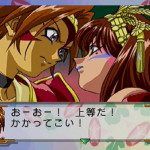 | 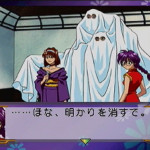 |
| Kanna as a fine Son Goku in the Teikoku Kageki Dan rendition of Journey to the West! | No but seriously, some crazy shit really does happen in this game! |
Before playing Sakura Taisen, I had never played a dating sim. It wasn’t necessarily because I hated the idea of them, it was just a genre that I never had any great interest in. For the first few chapters of the game, things felt exactly as I had feared they would: Boring. I was simply going through character introductions and making choices, and of course the choices were accumulating (or taking away, depending on the decision) points for the girl with which I was interacting. I knew from the start that I wanted to “end up” with Sakura (since Ayame was not an option, sadly…though I would later find out why), so I made most of my decisions based around that goal. However once the story got past the character introduction phase, I started to enjoy the dating sim parts of the game a lot more. Regardless, this style of game is extremely good practice for any Japanese student. Most of the game is very readable for any intermediate level Japanese student, though you will certainly run into some uncommon and complex kanji in parts. Don’t count on the voice acting getting you through too much of the text either, as I would estimate half of the dialog or less is actually voiced. Since the cast is full of very talented VAs though, the voiced dialog is always a real treat. Quick reaction time is a must when making those decisions. So if you can’t read the text fairly quickly and accurately, you may want to consider using a guide to make sure that you are making the right decisions for the girl that you want to be with.
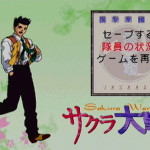 | 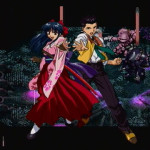 |
| Oogami looking 90s fabulous, as always! | Sakura and Oogami using their combination attack (Simon! Gattai da!) |
The biggest surprise for me was the strategy RPG portion of Sakura Taisen. I have a short and not altogether great history with strategy RPGs, in that I’ve only played a couple and I haven’t particular enjoyed them. After starting to think that my brain just wasn’t wired for strategy RPGs, Sakura Taisen really changed my mind. It certainly doesn’t do anything new and different that no strategy RPG before it hasn’t done: Each character has different special abilities, attack ranges and movement ranges across a grid. The thing that drew me in was the extremely well balanced level of difficulty. Rarely did I feel that the maps or enemies were too challenging, but I definitely died a time here and there as well.
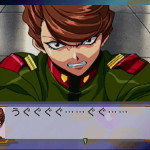 | 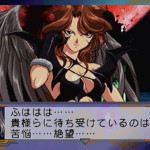 |
| I didn’t know that Ayame was into choking… | Oh wait, that makes sense now! She’s some sort of…S&M queen?! |
Sakura Taisen’s overall presentation is what really ended up pulling me in: The game play is solid in every way, the art is high quality (even if Fujishima is not your favorite designer), the writing is surprisingly good, and the music is simply fantastic (it holds up to anything written for any legitimate Broadway musical, though you don’t get to hear too many of the vocal versions in this game). This is a game that had a lot put into it by all of its contributors, and I’d heartily recommend it to anyone who enjoys dating sims or strategy RPGs, even just a little bit. Many more games were made in the Sakura Taisen series from here on, and it will certainly be interesting to see if they’ve managed to retain the charm that this first one had.
